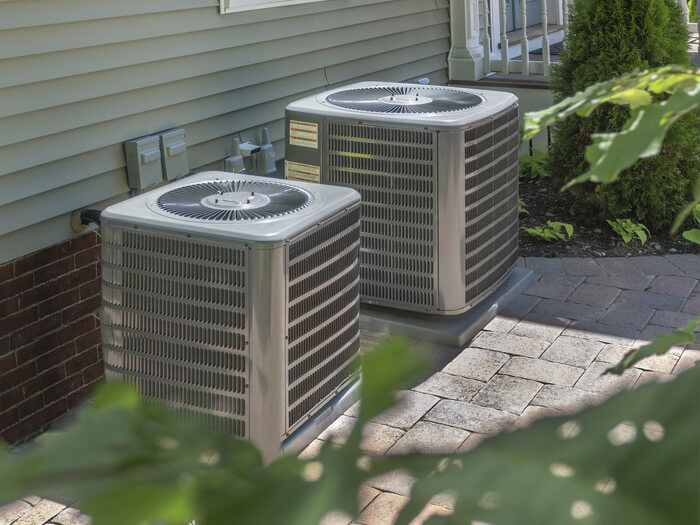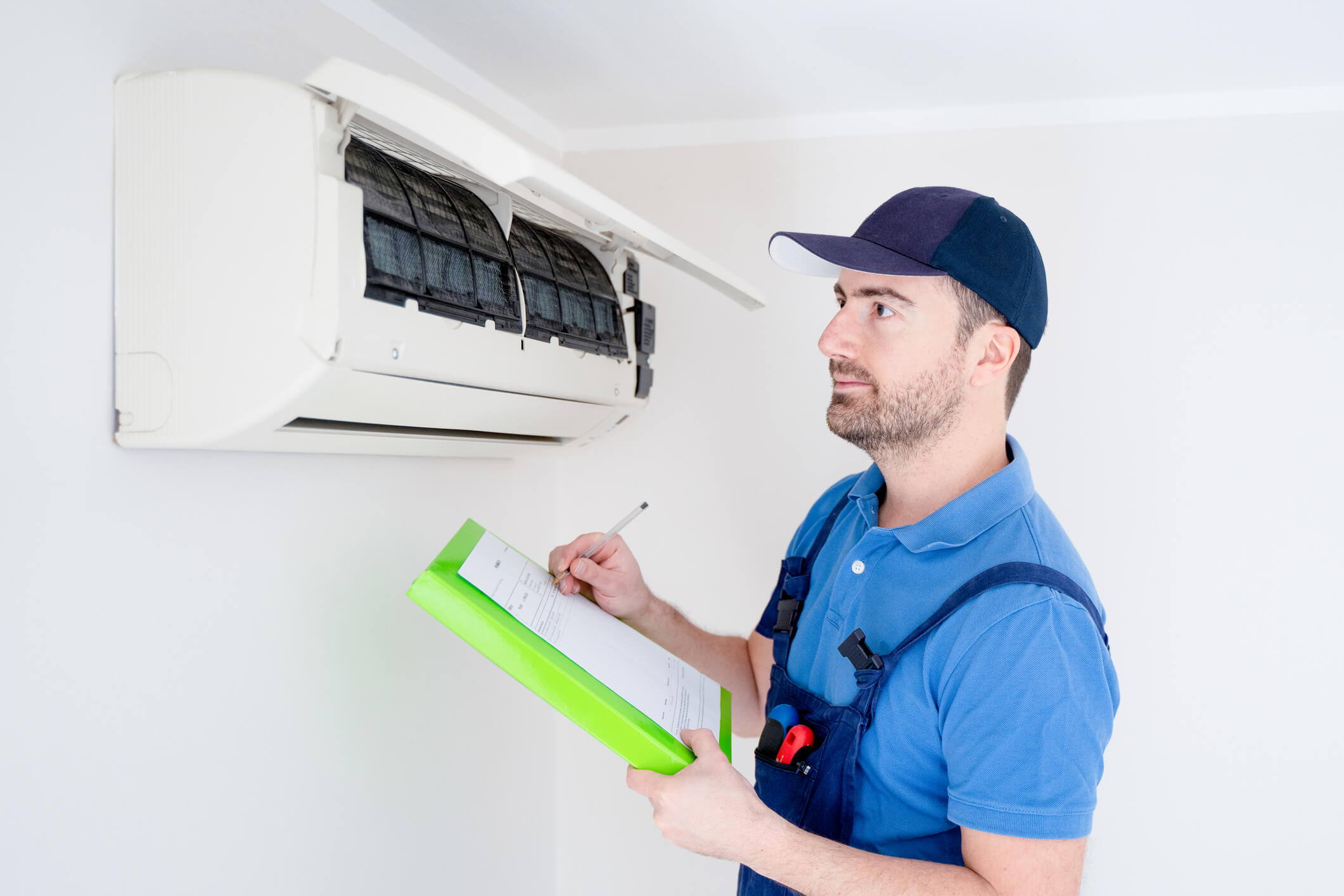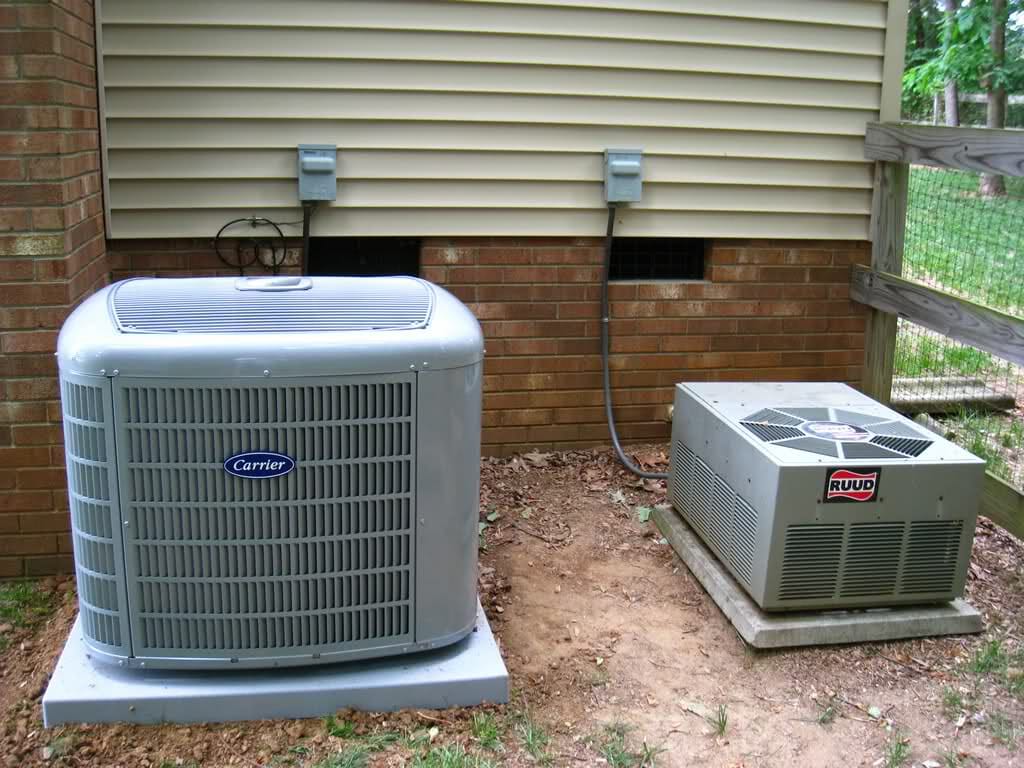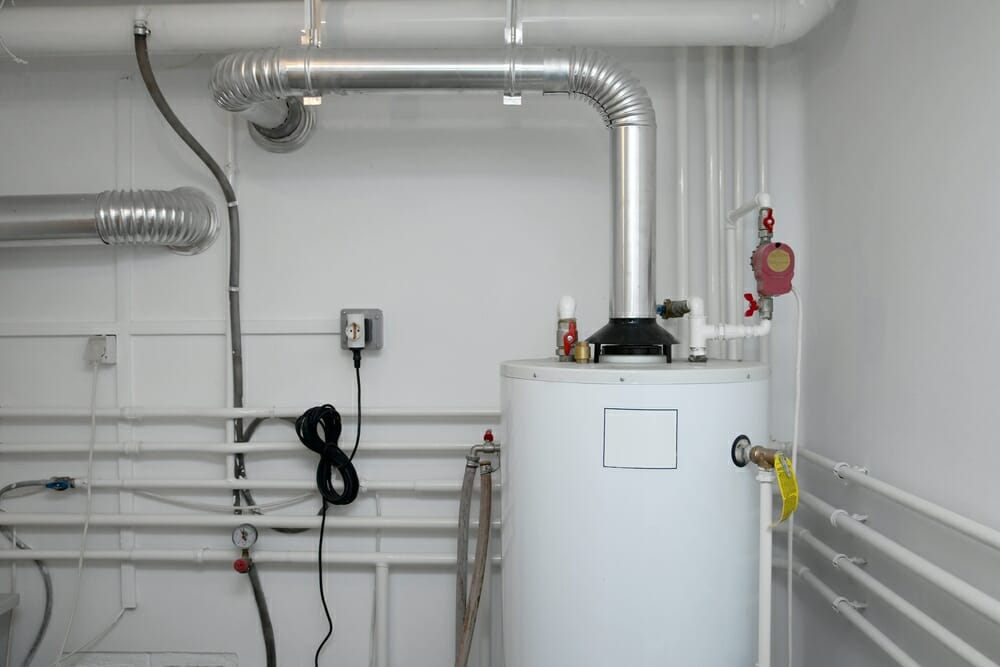Are you doing an HVAC project?
Modernize can pair you with three to four pros in your area, so you can compare options and save time and money.
How Does a Heat Pump Work?
A heat pump moves heat rather than making it. In heating mode, it pulls heat from the outdoor air and brings it inside. In cooling mode, it reverses the process and moves heat out of your home. Because it transfers heat instead of burning fuel, a heat pump is very efficient and a good fit for many U.S. climates. A built-in reversing valve switches the system between heating and cooling.
Heat pumps are among the most cost-effective, efficient heating and cooling options available today. The two most common types are air-source (uses outdoor air) and geothermal or ground-source (uses steady ground temperatures). Both are heat pumps, but they work with different heat sources and have different installation costs.
Parts of a Heat Pump
A typical system has an outdoor unit and an indoor unit connected by small refrigerant lines.
- Outdoor Unit (Condenser): Contains the compressor, reversing valve, and refrigerant components.
- Indoor Unit (Air Handler): Contains the evaporator coil, blower, and controls. It connects to supply ducts to distribute air throughout the home (or to a wall/ceiling cassette in ductless systems).
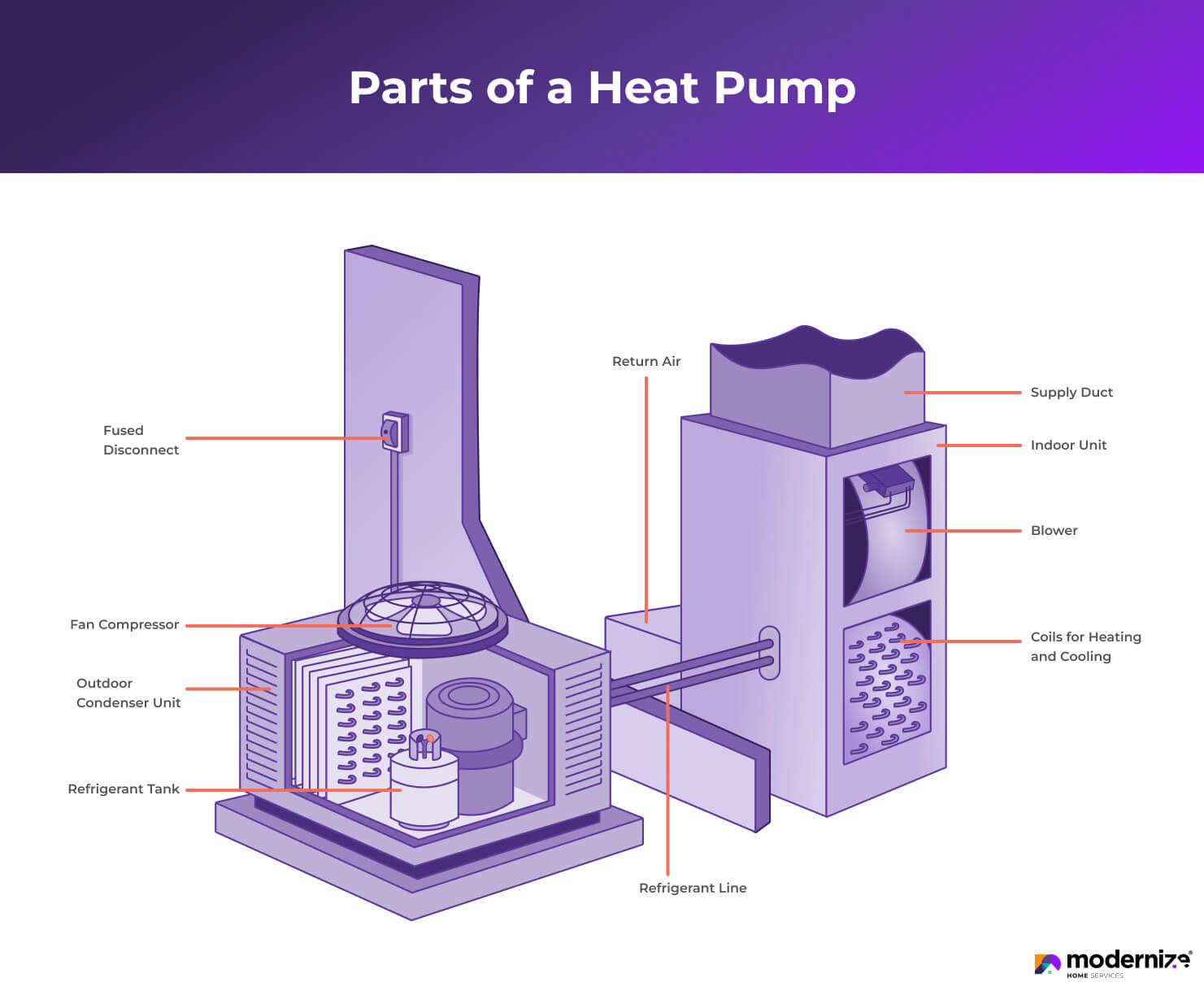
How Does an Air-Source Heat Pump Work?
An air-source heat pump uses an outdoor unit (the heat pump) and an indoor unit (air handler). It can deliver one to three times more heat than the electricity it uses — a key reason it is so efficient.
Common air-source setups include:
Find the Right Contractor for Your HVAC Project
Whether you’re ready to begin your project now or need some expert advice, our network of contractors are here to help. With a few simple questions, we’ll find the best local professionals for you
- Split System (Single Zone): One outdoor unit and one indoor unit to heat or cool a single space such as a bedroom, sunroom, or garage.
- Multi-Split (Multiple Zones): One outdoor unit connected to several indoor units, each with its own temperature control for different rooms.
- Ducted Air-Source: The same split system concept, but the indoor unit connects to ductwork to serve the whole home. This is ideal if you already have ducts. If not, adding ductwork increases installation cost.
- Packaged Heat Pump: All major components are in one outdoor cabinet (often on a slab or rooftop) with ducts connected to the home.
- Ductless (Mini-Split): No ductwork required. An outdoor unit connects to one or more indoor wall, ceiling, or low-wall units through small lines. Each indoor unit circulates air in its zone and is controlled by a thermostat or remote.
How Does a Geothermal Heat Pump Work?
A geothermal (ground-source) heat pump uses the earth’s steady temperature as its heat source. Buried loops filled with an antifreeze solution exchange heat with the ground. A heat exchanger inside the unit transfers that heat to the refrigerant, which warms (or cools) your home. Some models can also help with domestic hot water. These systems are highly efficient and very quiet, but they require trenching or drilling, which raises installation cost.
Benefits of Heat Pumps
- Lower Energy Use: Moving heat instead of making it usually means lower utility bills.
- Heating and Cooling in One: One system keeps you comfortable year-round.
- No On-Site Combustion: Electric operation reduces the risk of carbon monoxide and fuel leaks.
- Comfort and Safety: Fewer combustion byproducts, steady temperatures, and quiet operation.
Maintenance Tips
A heat pump can provide many years of reliable service with basic care.
- Professional Service: Schedule a yearly checkup to keep efficiency high and catch small issues early.
- Homeowner Tasks: Replace or clean filters as recommended, keep return and supply registers clear, and gently clear leaves, lint, or snow from the outdoor unit.
- Stay Efficient: Good insulation and air sealing help any heat pump perform better and cost less to run.
Next Steps for Your Home
A heat pump can lower your energy use, add quiet comfort, and give you heating and cooling in one system. If you choose the right type for your climate, size it correctly, and keep up with simple maintenance, it can serve your home well for years.
Find the Right Contractor for Your HVAC Project
Whether you’re ready to begin your project now or need some expert advice, our network of contractors are here to help. With a few simple questions, we’ll find the best local professionals for you
Reviews from Real Homeowners
Welcome to Homeowner Resources! We are the Modernize blog. Modernize pairs more than 3 million homeowners a year with pre-vetted contractors in their area. This blog started because we believe homeowners should know everything about their homes, from how their HVAC works to which front door colors they might love. On Homeowner Resources, you can find information on every part of your home, right down to how you can negotiate with contractors to get the best price. Here's more about the blog.
Need a contractor? Learn more about how Modernize finds the right pro for you.
